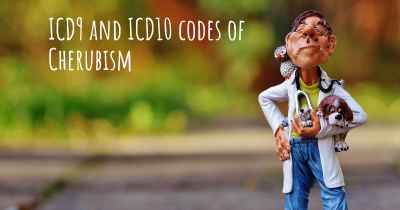What is the life expectancy of someone with Cherubism?
Life expectancy of people with Cherubism and recent progresses and researches in Cherubism

Cherubism is a rare genetic disorder characterized by abnormal bone development in the jaw and facial area. It typically appears in early childhood and gradually progresses until puberty, after which it stabilizes and may even regress. The condition is usually not life-threatening and does not affect life expectancy. However, the severity of symptoms can vary widely among individuals. Cherubism can cause facial deformities, dental problems, and difficulties with speech and eating. Treatment options focus on managing symptoms and may include orthodontic interventions, surgery, and dental care. Regular monitoring by healthcare professionals is important to ensure appropriate management and support for individuals with Cherubism.
Cherubism is a rare genetic disorder that primarily affects the bones of the jaw and skull. It is characterized by abnormal growth and development of these facial bones, leading to a distinctive cherubic or angelic appearance in affected individuals. Cherubism is typically diagnosed in early childhood and can vary in severity from mild to severe cases.
The life expectancy of someone with Cherubism is generally normal and not significantly impacted by the condition itself. Cherubism is not a life-threatening disorder, and individuals with this condition can live a full and healthy life. However, it is important to note that the severity of Cherubism can vary among individuals, and complications may arise in severe cases.
Cherubism is caused by mutations in the SH3BP2 gene, which plays a role in bone remodeling and development. These mutations lead to abnormal bone growth in the jaw and skull, resulting in the characteristic facial features associated with Cherubism. The condition is typically inherited in an autosomal dominant pattern, meaning that a child has a 50% chance of inheriting the disorder if one parent is affected.
The progression of Cherubism varies from person to person. In some cases, the abnormal bone growth may stabilize or even regress over time, leading to an improvement in facial appearance. However, in other cases, the condition may progress and cause further enlargement of the jaw and skull bones. The growth pattern and severity of Cherubism can be unpredictable, making it challenging to determine the long-term outlook for affected individuals.
Treatment for Cherubism focuses on managing the symptoms and addressing any functional or cosmetic concerns. In mild cases, no treatment may be necessary, and regular monitoring by a healthcare professional may be sufficient. However, in more severe cases, interventions such as orthodontic treatment, dental procedures, or surgical interventions may be recommended to improve facial symmetry and function.
It is important for individuals with Cherubism to receive regular medical and dental care to monitor the progression of the condition and address any complications that may arise. Additionally, genetic counseling may be beneficial for affected individuals and their families to understand the inheritance pattern and potential risks for future generations.
In conclusion, the life expectancy of someone with Cherubism is generally normal, as the condition itself is not life-threatening. However, the severity and progression of Cherubism can vary among individuals, and complications may arise in severe cases. With appropriate medical and dental care, individuals with Cherubism can lead fulfilling lives and manage any functional or cosmetic concerns associated with the condition.








